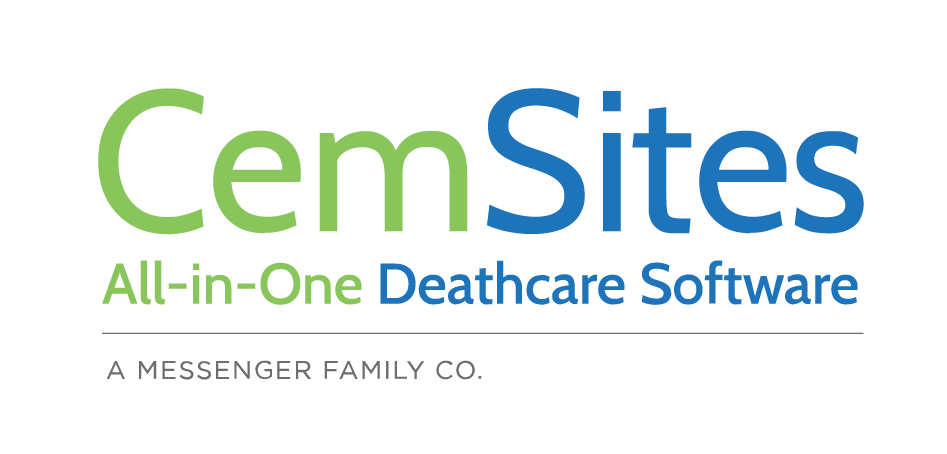Radio Station: WESA 90.5 – Pittsburgh’s NPR News Station
Broadcast Date: July 16, 2019
Interviewee: Sean Johnson, Chief Technology Officer, CemSites
Interviewer: Kiley Koscinski, Morning News Producer, 90.5 WESA
A Local Startup Is Bringing Cemeteries To The Cloud
Announcer:
It’s The Confluence on 90.5 WESA. I’m Kevin Gavin. Cloud computing has infiltrated almost every corner of our working lives, but what about our afterlives? Cemeteries are often managed by technology from the last century. But a Perryopolis startup is looking to change that and to bring cemetery management into the modern era.
The Confluence’s Kiley Koscinski recently spoke with Chief technology officer and co-founder of CemSites – Sean Johnson
Kiley:
So CemSites, how does this work for cemetery managers?
Sean:
Well, for cemetery managers, this manages all of their business operations. I mean from the very first call, when someone – if there’s a death – and there’s a loved one on the other line, they can type that information right there into their online software. It tracks every aspect from that point forward; their invoicing, all the way to the basic ownership information and the obituary information and all the details about the death of a loved one.
Kiley:
Tell me about your clients who are you serving now and who are you hoping to serve in the future?
Sean:
We actually serve cemeteries of all sizes so our software it was built the same for each and every cemetery but it’s very customizable. Every single cemetery is laid out differently and those logistics, those maps, those sections they’re all laid out differently and pose a lot of different logistical issues that are software solves for them.
Kiley:
How many cemeteries are still using paper maps and paper records?
Sean:
Probably hundreds of thousands actually. Very few of them actually have any software whatsoever.
Kiley:
So why do you think so many cemeteries are still relying on paper systems
Sean:
To be honest with you, they have a unique business in their communities that kind of comes to them. So there’s not a lot of change in a cemetery business over the years. They pretty much haven’t had to change their business model century after century.
Kiley:
Is it because the business is sort of so fragmented? Like it’s very locally-based? You have one person – may be a few people – in charge of a plot of land for a dozen or more grave sites, and it is that part of it?
Sean:
Yes, there are plenty of local cemeteries there are large management groups that own multiple cemeteries so even corporate America has infiltrated the cemetery business. But most of them are kind of mom and pop local businesses.
Kiley:
Do you find the cemeteries owned by these larger management companies are more likely to get into the cloud computing or are they also using paper records?
Sean:
They are more resistant because they’re a larger corporation. There’s a lot of things to move and adopt and so all of this data with the larger corporations – it’s a bigger job for them. You know it’s one thing if I was a local cemetery and I only have twenty or thirty thousand burials, but the corporation where they manage for corporate office they have maybe hundreds of locations and so it’s an even bigger job for them even though they may have some other resources it is very difficult.
Kiley:
So CemSites started in your basement. Tell me how this idea about bringing cloud computing to cemeteries came about.
Sean:
Yeah, we actually started in my business partner’s basement, and we found that there was actually an association of cemeteries for the country. I never thought there would be such a thing. You know, you go to trade shows and you go to things like that and the home show, but you never think there would be an organization like that for cemeteries. Once we found that, we joined that association, we sent a large email blast and some of the largest cemeteries in the country called us are were interested in our software. So that’s when we knew we had something. We just kept chipping away at that list and cemetery by cemetery signed on. Just a few years later we were able to purchase office space.
Kiley:
It’s the confluence on 90.5 WESA. I’m Kiley Koscinski and I’m talking to Sean Johnson the co-founder of Cemsites, a company developing cloud software for cemeteries.
Sean, organizing records and keeping the clean databases obviously is beneficial for those in the business of managing cemetery, but your software also has real applications for the families of the deceased.
Sean:
Yes absolutely, once a cemetery enters our records digitally, they put in the names, their birth, date of death of loved ones – they become searchable online. So, it automatically gets published to their website. Beyond that you can access that with your smartphone, and you can walk directly to the grave of your loved ones. Beyond that it serves as a great local resource for research for the community so that they can look up obituaries find more information about their loved ones. Ancestry genealogy research is just a huge thing and all of these larger websites, you know you think of folks like ancestry.com and things like that, they depend on data from the local cemeteries.
Kiley:
So in addition to research, the mobile navigation feature lets folks find grave sites on a digital map as you said with a smartphone and tour the grounds. Do you find this feature valuable for cemeteries like where famous people might be buried?
Sean:
Oh absolutely, that’s a great application of it. You think of the most famous people in our country and they always seem to be a points of interest for folks.
Kiley:
Could you see this being used in a similar way to help people find unmarked graves or plots without headstones?
Sean:
Absolutely. You would be amazed at how many headstones and how many graves are not marked. You know there’s no marker, there’s no headstone, and there’s no monument. Just walking through the cemetery even if you have a somewhat of a recollection of where that person was buried, you can never be sure. When using the smartphone, gets you right next to the grave or right over top of the existing headstone, if there was one there. So it’s very accurate and takes people right there what they’re looking for
Kiley:
A lot quicker than going through a filing cabinet looking for maps to find names and coordinates.
Sean:
Yes, We hear stories all the time where cemeteries – because they don’t have something like this – may take them up to 20 or 35 minutes to find this information
Kiley:
So for a cemetery manager listening, you know they have cabinets full of paper records,
what does it look like for them to take those paper records and put them into this software?
Sean:
Yeah, it’s pretty simple. You just start with one file at a time, taking pictures of it with your smartphone or you could purchase larger scanners that will do bulk scanning for you. You then would attach that right into the software or just start manually entering that information. What we encourage folks to do and cemeteries is that they may think that this is like an impossible task because they have thousands and thousands of records, but if they just start with their most active sessions that’s where they’re getting the most traffic the most people coming to visit graves, you know they’re visiting folks that have passed away recently in their lifetime, not those older sections that you know have hundreds of years of history and things like that.
Kiley:
How do you see the market of cloud computing and cemeteries growing?
Sean:
Yes I mean really, the future of cemetery software is here – today. We’ve had some of this technology now for ourselves well over eight years and we really need the cemeteries to adopt and engage with their communities. You know I may not think that you have a need to have an account at your local cemetery, but a lot of cemeteries offer and sell their graves pre-need so you can pre-plan for your funeral arrangements and things like that and it’s very helpful to do that.
Kiley:
CemSites recently did a seminar and Notre Dame with members of the community to teach them more about this software and I understand you were trying to do another seminar locally tell us about that.
Sean:
So we have a seminar that helps cemeteries and we take the cemeteries through how technology can really revolutionize and change their cemetery and we help them with topics of communication and business continuity and just things that you may not think immediately that technology solves. We talk about these things in a broader way and cemeteries are able to walk away with just a wealth of information and things that they can implement today. They don’t need to buy an expensive software package to start adopting technology. They can start using some of the things that they may already have right there in their office. Some cemeteries are smaller they don’t have an IT person in there in their building, so we can really help fill that gap through the information they learn at the seminar.
Kiley:
We’ll have a link to information about that seminar on our website at WESA.FM. Sean Johnson is the Chief Technology Officer and Co-founder of CemSites, a software company helping cemeteries digitize their records. Sean, thanks so much for taking the time.
Sean:
Thank you. It’s my pleasure.
Kiley:
I’m Kiley Koscinski. You’re listening to The Confluence on 90.5 WESA.
To read the original story or listen to the audio broadcast, please visit WESA.FM “A Local Startup Is Bringing Cemeteries To The Cloud.”
Learn more about the upcoming Cemetery Technology Seminar – Tuesday, August 27, 2019!



